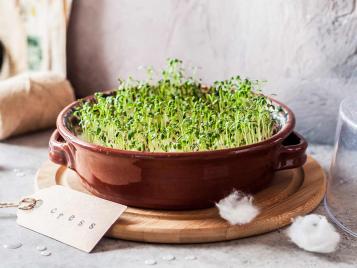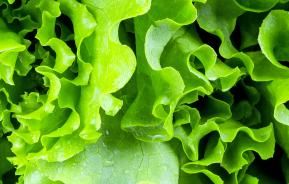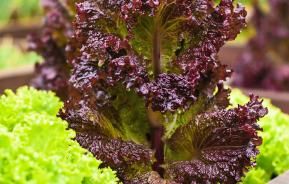Watercress is a delicious salad crop, which is full of minerals and nutrients, and has a sharp, peppery, slightly tangy taste. It can be eaten on its own, or mixed with other salad ingredients, and makes a delicious cold soup.
It is a perennial aquatic herb or salad, which is found growing naturally alongside slow running water. But, if you want to grow it at home, you don’t need to install your own stream or similar running water! Watercress can easily be grown in a container or in soil that stays permanently wet.
How to grow watercress
Cultivating watercress
Watercress prefers a position in light shade, but will grow well in a sunny position, providing the soil or compost is wet. It needs to be kept moist all year round, so grows well in damp or wet soil or a container that sits in a deep saucer filled with water.
Watercress can also be grown in small pots kept on a brightly lit kitchen windowsill to have fresh leaves readily to hand. This will also ensure you have plants available all year round.
Watercress varieties
Varieties of watercress are not always available, but several seed companies do supply seeds of watercress.

Sowing watercress
Sow seeds outdoors in spring when the soil has warmed up; minimum temperature 8°C (46°F). Or seeds can be sown directly into the containers where you want them to grow.
To start off plants earlier in the year, sow seeds from mid-January to the end of March in pots or trays of moist seed sowing compost. Place in a propagator or warm place covered with a plastic bag, and keep at a constant temperature of 8-15°C (46-60°F).
When seedlings are large enough to handle, transplant them into 7.5-9cm (3-3.5in) pots.
Harden them off by gradually acclimatising them to outdoor conditions for 10-14 days and plant out after the risk of frost, 10-15cm (4-6in) apart.
Planting watercress
As watercress plants need a permanently damp soil, make sure you dig in plenty of bulky organic matter, such as garden compost or planting compost, and incorporate it well into the soil before planting.
Place in the planting hole and adjust the depth so that it is planted at the same depth as it was originally growing and the top of the rootball is level with the soil surface. Mix in more organic matter with the excavated soil and fill in the planting hole. Water in thoroughly.
To grow in a container, plant 3-4 in a 30cm (12in) tub or pot.
You could also buy watercress from a supermarket or shop. Try and buy plants that have already started to produce little white roots and pot them up in small pots.
If you have some plants without roots, pop the stems into a water-filled jam jar or bottle until roots start to form. Then pot them up.
Suggested planting locations and garden types
Patios, containers, water gardens, bog gardens.
How to care for watercress
Keep the plants thoroughly well watered, so the soil or compost never dries out.
If growing watercress in a container, place a saucer under it and keep it permanently topped up with water. Every now and again, especially in hot weather, remove the water from the saucer and flush the compost with fresh water to keep it from becoming stagnant. Then replace the saucer and top up the water.
A monthly liquid feed with a balanced plant food throughout summer will keep plants growing well and producing lots of leaves for picking.
Remove flowers as soon as you see them to keep plants cropping well.
Harvesting watercress
Start harvesting when the plants have become well developed by trimming off the tops of the shoots with scissors. Don’t cut too low down on the plant to ensure the stems produce lots of new growth and sideshoots.
| Flowering season(s) | Summer |
|---|---|
| Foliage season(s) | Spring, Summer, Autumn, Winter |
| Sunlight | Partial shade, Full sun |
| Soil type | Chalky, Clay, Loamy, Sandy |
| Soil pH | Neutral |
| Soil moisture | Poorly drained |
| Ultimate height | Up to 15cm (6in) |
| Ultimate spread | Up to 15cm (6in) |
| Time to ultimate height | 3-4 months |








